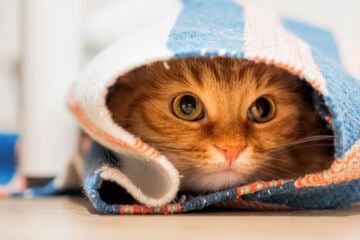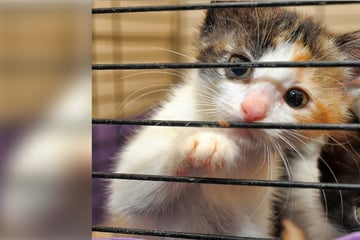How to pet a cat: Dos and don'ts for your furry feline
While cats love a good ear scratch or a blissful belly rub, there are some dos and don'ts when it comes to petting these furry fellows. To avoid some common mistakes, check out our cat guide.
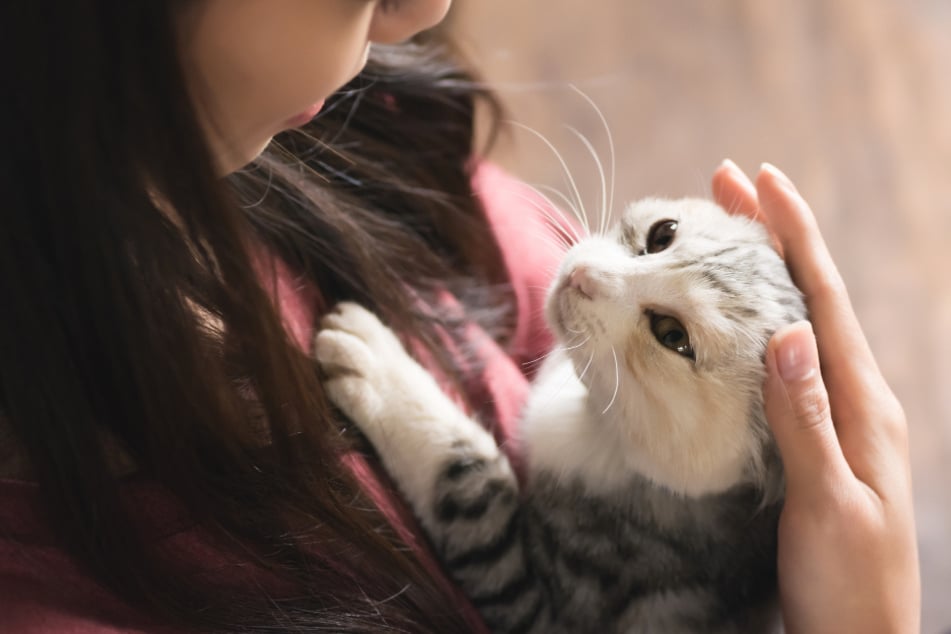
Showering your cat with affection takes more than just inundating your little buddy with an over-abundance of food.
Indeed, finding the best way to pet your cat and making sure that you're avoiding common mistakes can be the key to keeping your feline friendly.
Kitties can be tricky creatures, and are often rather opinionated. It's easy to annoy the paws off of your cat, especially those who are more fickle. A cat scratch might result in the need for a Band-aid, and some expletives hurled your kitty's way.
Here are some helpful hints to clue you in to the most common mistakes people make when petting cats, and some tricks to cuddle up to your new best friend.
How to pet a cat properly
While it's hardly a challenge, there are a few things you should keep in mind if you want to pet a cat. These little fur-balls like to be touched sometimes, but not always, and not everywhere. In order for both a feline fan and a Kitty to enjoy some quality cuddles, a curious human should pay attention to a few basic principles when petting a cat.
The first thing to take notice of is the speed, roughness, and direction of your stroking. If a cat is being patted roughly, stroked against the direction of their fur's growth, or patted a little too quickly, they're not going to be particularly pleased with their admirer.
Instead, it is best to pet a cat gently with your fingertips. Stroking gently from head to tail with the flat of the hand is a darn good option, with light rubbing and gradual pressure setting the stage for a pleasant and relaxing cat appreciation session.
It is best to be careful and try out different movements and techniques carefully while petting. It will be obvious if your cat isn't enjoying something – note any hissing or shuddering – and you can change up your movements if this is the case. Look out for a swishing tail, flicking ears, or sudden movements that may signal nervousness from your pet.
There is no purr-fect way to pet a cat. Every day and every petting session will come with wildly different preferences, so don't try read your kitty's mind. But do try to make them comfy!
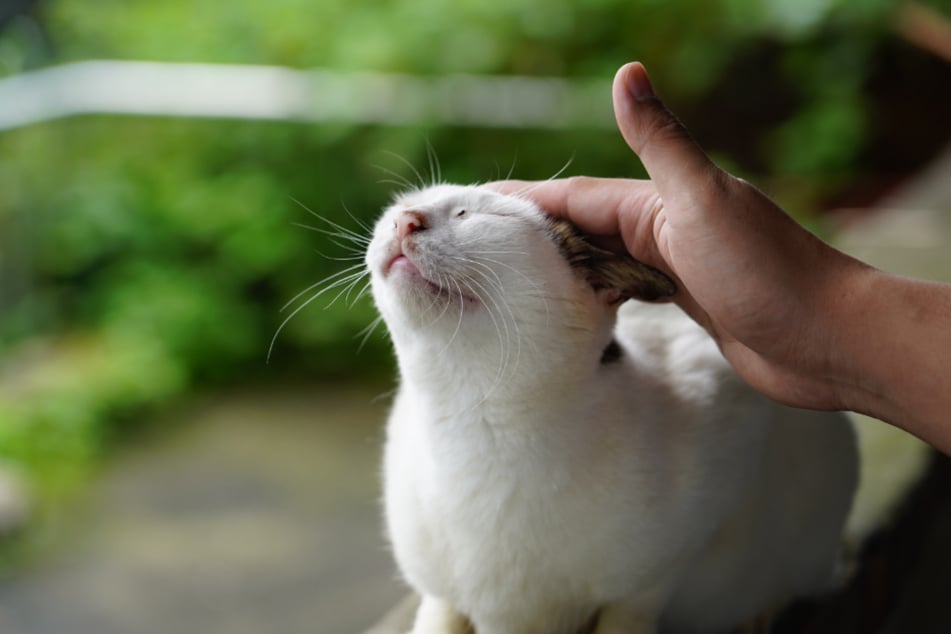
Where do cats like to be pet?
The best places to pet a cat are under the chin, on their back and spine, and at the root of their tail. These areas are particularly pleasurable and calming to our little feline friends. There are many places where cats like to be scratched, each cat having a slightly different opinion on the matter. areas that provide an opportunity for a good-quality rub.
Where to pet a cat:
- Under the chin
- Chin and cheeks
- Back and spine
- Tail root
- Temples
- Forehead
- Neck
- Ears
If you're looking to give you Kitty a good-quality rub, pick one of the spots from that list. Topping the list of best spots to pet a cat, though, is under the chin. Interestingly, cats like to be scratched under the chin because their chins release "happy" pheromones. These small molecules get released when you scratch a cat's chin, so keep it up!
Meanwhile, there's a pretty extensive selection of spots that should generally be avoided. Don't pet your cats in these places:
- Belly
- Legs
- Nose
- Paws
- Tail
Keep in mind that cats are individuals, though, and have their own opinions on where they should be touched, smooched, held, and petted. It's a learning process, and the better the relationship between cat and cat owner, the more likely a kitty will allow itself to be stroked in sensitive areas.
Keep in mind: Cat's preferences can change abruptly, prompted by a variety of factors. Sometimes preferences can change because a cat is experiencing pain in a certain area. If you are suspicious, make sure to take your feline friend to the vet.
When to pet a cat
Regardless of how adorable your cat sometimes looks, you should be aware of when, and when not, to initiate a petting session. Avoid petting your cat when it is eating and sleeping, or in any situation where the pats could cause it unwanted stress.
If you have a new feline family member, you need to allow it time to get used to the different environment and new humans. You might find that your new cat distances itself from you at first, and that's okay. Keep it safe, take things slow, and initiate the relationship step-by-step – soliciting trust and, eventually, cuddles. Cat lovers should never force a kitty to cuddle or to be held.
As a rule, your cat will approach you when it wants to be petted. Cat lovers and owners should never chase or hold a cat against its will.
One tip for initiating a cuddling session is to find a relaxing situation, like lying on a sofa or a bed, and chilling. If you seem calm, your cat is likely to come and join you. After all, cats are nothing if not lazy, and generally keen for a good-quality lazy day.
Once your little buddy comes to join you, make sure that you continue to pay close attention to how you are petting it. Make sure that you read its body language, pat it in the right places, listen for its purr of satisfaction, and never hurt it.
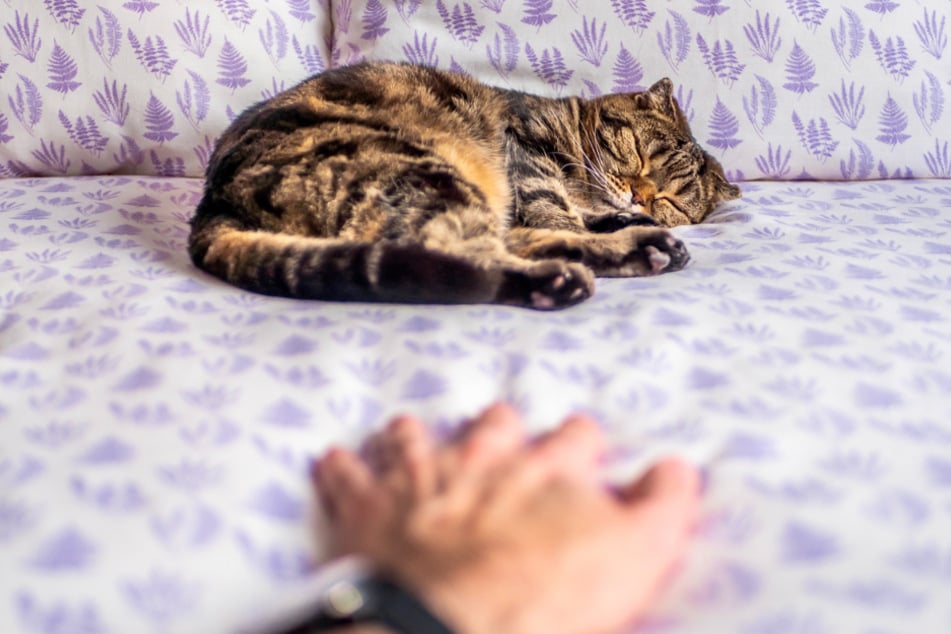
How to pet a stray or feral cat
Under no circumstances should you ever pet an obviously stray or feral cat.
Many cats without homes, humans, and an easy food source are not only quite violent, but can carry with diseases that you really don't want to pick up if you get bitten or scratched.
If the cat has a collar, seems friendly, and is clearly owned by someone, feel free to cautiously pet it.
Just be wary, and always approach lone animals with care.
Biggest mistakes when petting a cat
When you pet a cat, you're more than likely seeking to make it happy.
Sadly, many cat owners never take the time to actually learn about what cats do and don't like during a petting session. These small oversights can cost you a good relationship with your four-legged friend.
Make sure to avoid these mistakes when petting your cat:
- Never pet your cat against its will.
- Never force, badger, or chase your cat simply so that you can pet it.
- If the cat is seeking affection and closeness, make sure to pet it if it is possible at the time.
- Never pet the cat with too much pressure, frantically, or too quickly.
- Never tap, poke, or slap the cat rather than gently stroking it.
- Never clutch or hold the cat roughly.
- Never pet the cat from above, or lean over the cat when petting it.
- Don't stroke sensitive areas of a cat's body.
- Always avoid stroking a cat against the direction of its fur growth.
- Don't stare at the cat without blinking, as this can be seen as a threat.
- Don't try to pet your cat during stressful or anxious situations.
- Avoid petting a cat at the wrong moment, such as when it is sleeping or eating.
If you make these mistakes too often as a cat owner, your feline might become more and more distant, eventually not wanting to be petted at all.
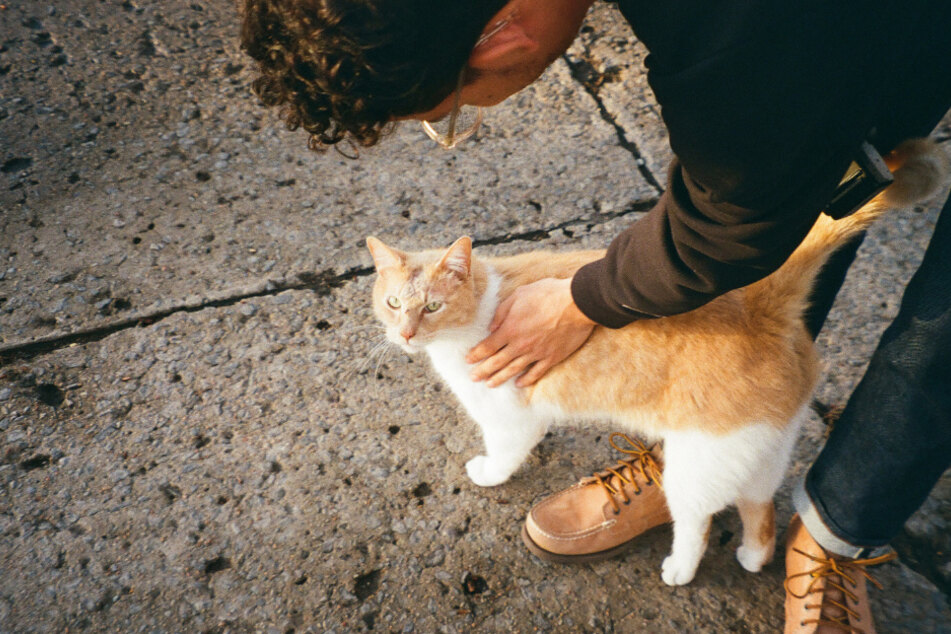
How to pet a cat: The final tips
Always pay attention to a cat's needs and wants when attempting to pet them. It is important to never harass your little buddy, no matter how much you want to show your love for their soft, fluffy coats. It's always best to allow a cat to choose when, where, and how it wants to be petted.
If you are careful and if you follow the subliminal prompts that your cat will give you, you will likely develop an amazing relationship with your feline friend.
Cover photo: 123RF / Elwynn


